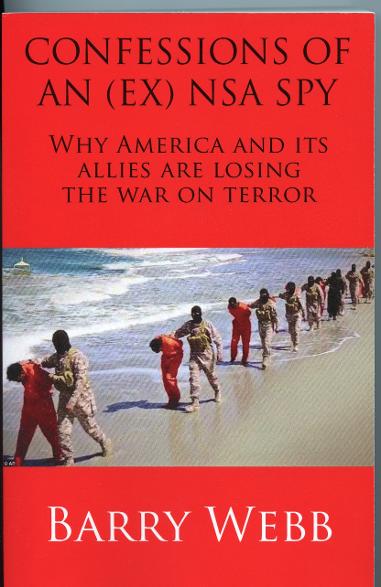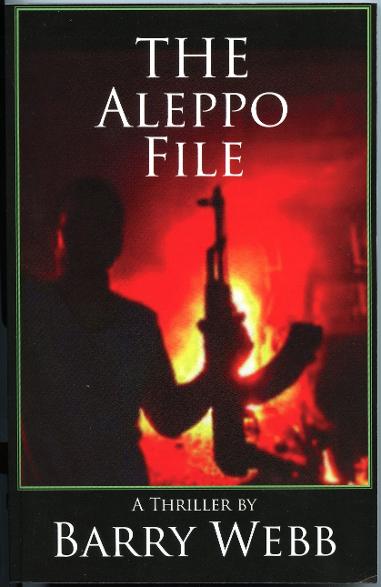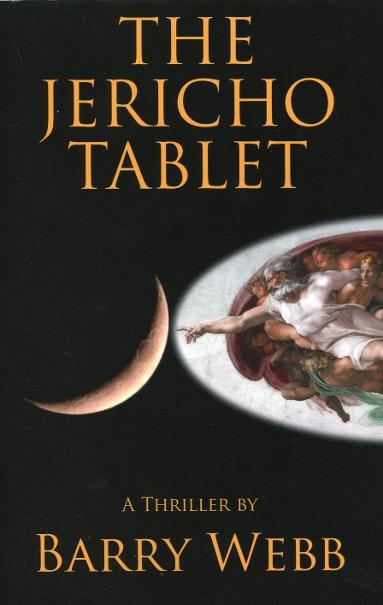WHO WERE GOG AND MAGOG?
(posted June 2, 2011)
Perhaps no other book in the Bible has stirred the imaginations of Evangelical and Millennial Christians more than has the Book of Ezekiel. And Perhaps no other passages in the Book of Ezekiel have caused such a row as have his powerful diatribes against “Gog” and “Magog.”
“Gog” and “Magog” have been identified as everything from The British Empire to the Soviet Union to Nazi Germany to U.S. capitalism to modern Russia to the European Common Market, and to God knows what else, by those who try to find a modern, or post modern, interpretation of Ezekiel’s prophecies.
Unfortunately folks, all of those interpretations are wrong, as we shall see.
TECHNIQUE OF TENSE SWITCHING
In order to understand the Book of Ezekiel, one first has to understand the modus operandi of exilic and post-exilic Jewish “prophets.” One of the first things one learns when they begin the study of Biblical Hebrew is the technique of tense switching. In other words, events that have occurred in the past, are often expressed with the “imperfect” tense in Hebrew, which can be interpreted as either “present tense,” or “future tense.”
Conversely, often events that are expected to occur in the future are expressed in the “perfect” tense which is usually interpreted as “past tense.” This tense-switching is accomplished linguistically by usually placing the conjunction WAW in front of the verb as a signal that the tense is being reversed. Therefore, many passages in the Bible that have been interpreted as being “prophetic,” are really historical in that they (the “prophets”) were recording events that have already occurred while couching these events in the “imperfect,” or “future” tense for literary impact.
MODUS OPERANDI OF PROPHETS
However, above and beyond the technique of tense-switching was the practice of purposely taking events that occurred in the past and recording them as if they really were a prophecy direct from heaven predicting some future event—without resorting to the tense-switching technique of inserting the WAW. Often they would include the phrase “in those days,” or some similar wording in order to make it sound like something that might well be repeated in the future. Mesopotamian writings are full of such “prophecies” such as the one issued by the Marduk Priesthood “predicting” Nabu Na’id’s rise, his seventeen-year rule, and his dethronement by someone from Iran. www.lastkingofbabylon.com
This “prophecy” was written after Nabu Na’id’s fall and was most likely commissioned by the conquering Persian authorities (i.e. Cyrus the Great). “Prophecies” such as these were used by the ruling powers as part of a propaganda effort to convince the populace that the events that have just transpired were sanctioned, or even mandated, by the Gods. The writers of the Bible, living in Babylonia as they were, could not help but have been influenced by the writing styles of those around them.
PROPHETIC SCHOOLS
As a matter of fact, the Jews in Babylonia, beginning in the mid-sixth century B.C. had schools, or what we would call “colleges,” that did nothing but teach scribes how to write in the “prophetic” tradition. In other words, these were creative writing classes where the students were taught specifically how to write what we today would call Science Fiction and Fantasy. The better efforts of these students of creative, speculative writing have ended up in our Bible among the books of the “Prophets.” For inspiration these students of creative writing not only turned to historic events and placed them in the “future,” but they also drew upon Babylonian and other mythologies, and most especially the fanciful art work on the walls of Babylon’s public buildings.
THE POWER OF EZEKIEL
Of all of these students of fanciful writings in the Babylonian “exile,” none were better than Ezekiel. His works were (and still are) literary masterpieces. For any modern day preacher who wants to preach “fire” and “brimstone,” there is no book in the Bible that can serve the purpose as well as Ezekiel. And no passage in Ezekiel can stir the fires as hotly as those against Gog and Magog.
MEANING OF GOG AND MAGOG
Gog and Magog are historical. They are not likely prophetic, or meant to be interpreted as some future nation or great power. The term “Gog” comes from the “Gogid” dynasty that ruled the country of Lydia in western Anatolia from 716 to 546 B.C. The founder of the dynasty was a man the Greeks called “Gyges” who ruled from 716 to 644 B.C. In Mesopotamian cuneiform his name was written as GU-GI, which we would pronounce as “Gog.” Gog’s descendants who ruled the country until 546 B.C. have thus been called (by historians) the “Gogid” dynasty. That is where Ezekiel got the idea for “Gog.” In the Semitic languages, the noun of place for GOG is MAGOG. So, “Magog,” is simply the place where this “Gogid” dynasty ruled (during Ezekiel’s time), i.e. Lydia in western Anatolia (called Turkey today).
EZEKIEL’S PUN
But Ezekiel, like most of the Biblical writers, could not resist a good play on words when one was available. In Ezekiel 39:6 the prophet has God saying: “And I will send a fire on Magog, and among them that dwell carelessly in the isles.” Even though Ezekiel used the Hebrew word AISH for “fire” in this instance, he knew perfectly well of an older Semitic term AGAGA (alif gimal gimal) meaning “to set on fire,” “to set ablaze.” The noun of place formed from that root stem is: MAGOG. So “Magog,” from Ezekiel’s standpoint, meant both the place where the “Gogid” dynasty ruled, and “a place of fire.”
GREEKS
The people who “dwelt carelessly in the isles” are, of course, a reference to the Greek Ionians who lived on the islands in the Aegean Sea and were subject to the rule of Croesus, the last of the “Gogid” kings. Ezekiel included this reference to the isles purposely to reinforce the idea that this was Lydia he was talking about, and not some other fanciful place.
LYDIA’S WEALTH
As for the references to “Gog” and “Magog” controlling wealth and/or world trade, that is another reference confirming that Ezekiel meant Lydia under the rule of the last Gogid king Croesus. Before the Gogid dynasty of Lydia came along, western Anatolia was dominated by the Phrygians who controlled much of the former Hittite mineral-rich mountain areas as well as the Bosporus straits separating Europe from Anatolia and Asia. Assyrian sources say that one of the Phrygian kings was a certain “Mita” of the Mushki.
THE “MIDAS” TOUCH
This Mita of the Mushki started a dynasty that the Greeks termed “Midas,” meaning that their subsequent kings were all termed “Midas” (by the Greeks). Because of Phrygian control of Anatolian mines (Gold, Iron, and Tin), and their control of the straits, and thus all trade between the Black Sea and the Aegean and Mediterranean Seas, as well as between Europe and Asia, they became extremely wealthy. The wealth of the “Midas” kings gave rise to the saying “the Midas touch,” meaning that everything that king “Midas” touched, turned to gold.
KING CROESUS
These Phrygian areas were then conquered by the Gogid Lydians in 620 B.C., so that by the time that Lydian king Croesus came along in 560-546 B.C., the Lydian Empire controlled all of western Anatolia (including the Gold, Tin, and Iron mines) and had a firm vice on the sea routes between the Black Sea and the Mediterranean, and the land routes between Europe and Asia. In addition they controlled all of the well-to-do and rising Greek mini-states in the Aegean and along the coast of mainland Greece as well. They were also challenging Phoenician dominance of the Mediterranean to boot. If that wasn’t enough, the Lydians invented coinage in the late 7th century B.C., and their coins were used all over the civilized world, perhaps giving some the impression that they controlled world trade.
Because of this, and because of the huge mountains of wealth that flowed into King Croesus’s coffers, the Greeks “coined” (excuse the pun) the term “as rich as Croesus.” And, all of this is the source of Ezekiel’s reference to Gog and Magog being controllers of world trade.
For more details on “Gog,” “Magog,” “the chief prince of Meshech and Tubal” (all Anatolian place names), and details on how Ezekiel’s prophecies against the Ammonites, Moabites, and Edomites were fulfilled in the mid-sixth century B.C., please read the forthcoming trilogy of The Last King of Babylon. www.lastkingofbabylon.com
For more information at: www.nsaconfessions.com

What are the long-term, overarching historical laws and trends that tell us the West is doomed?
Why is "Climate Change" not a national security issue, but the hysteria over it is?
What intelligence failures, if any, led to 9/11, the Boston Marathon bombing, San Bernadino, and other terrorist acts on our soil?
Why did we turn Iraq over to the Iranians?
Why did we go into Iraq in the first place?
Did we create ISIS? If so, Why?
Why do virtually all Middle Easterners across the board think that the U.S. is a major sponsor of terrorism?
Is Islam truly a "religion of peace?"
Why does Washington exert such Herculean bipartisan efforts to misunderstand these issues?
What are the Islamic prophecies driving recruitment for groups like ISIS and al-Qaeda?
Why driving ISIS from the battlefields of the Middle East will not be the end of the war on terror, no matter what our government says.
All of these issues and much more are discussed in this, the only counter-terrorism book on the planet that pulls it all together and connects all the dots.

BACK FLAP for "THE ALEPPO FILE"
Faced with cratering poll numbers, a U.S. president agrees to a plot having Islamic radicals kidnap an ambassador so he can "negotiate" his release in turn for the "Blind Shaykh," currently in prison for the 1993 World Trade Center bombing. The president hopes that the Blind Shaykh's return to Egypt will strengthen the hand of the Muslim Brotherhood to corral Islam's more radical terrorist groups and unite all Sunni Muslims with Turkey in a resurrected Ottoman Empire aimed at keeping the Russian bear caged. But when the kidnap operation falls apart and four Americans are killed at the U.S. consulate in Aleppo, the administration goes into full cover-up mode. Only undercover agent Matt Nolan knows the full truth of what happened in Aleppo--placing him number one on the Administration's enemies list. As Russia threatens war over the Ottoman Empire plot, Matt has to dodge numerous assassination attempts in his desperate effort to return to the U.S. to testify before Congress, put a stop to the Ottoman Empire plot, and defuse WWIII.
For more information, please visit the book's website at: www.thealeppofile.com
To purchase go to: www.amazon.com
ALSO NOW AVAILABLE:

What if an ancient table was discovered that undermined the foundations of both Christianity and Islam while giving instructions for re-awakening an older god, a god who exacts frightful revenge while promising a utopia of eternal life, peace, and vast knowledge—in return for absolute devotion and loss of free will?
What if that “god” was an artifact buried just under the surface of the moon supposedly by an ancient space-faring race? What if the president of the United States had a Messiah complex and staged his own “assassination” and “resurrection” three days later in order to become the “son” of that new/old “god” on the moon?
Matt Nolan and his colleagues in the U.S. Intelligence Services have only a limited amount of time to uncover the secrets of the resurrected artifact and find a means for destroying it and corralling the president—before they themselves are destroyed.
Is it the rapture that Evangelicals have been praying for?
Is it the new heaven and the new earth prophesied in both the Bible and the Qur’an?
Or, is it the anti-Christ? The Beast of Revelations? The great blaspheme? The abomination that maketh desolate?
Or, is it something else even more sinister?
THE JERICHO TABLET serves up a captivating mixture of ancient Near Eastern history, religion, and linguistics to go along with its modern day spy craft, political intrigue and corruption, media collusion, and science—while entertaining the reader with a fast-paced plot.
For more information, please visit the book's website at: www.thejerichotablet.com
To purchase, please click on: www.amazon.com / Books / The Jericho Tablet